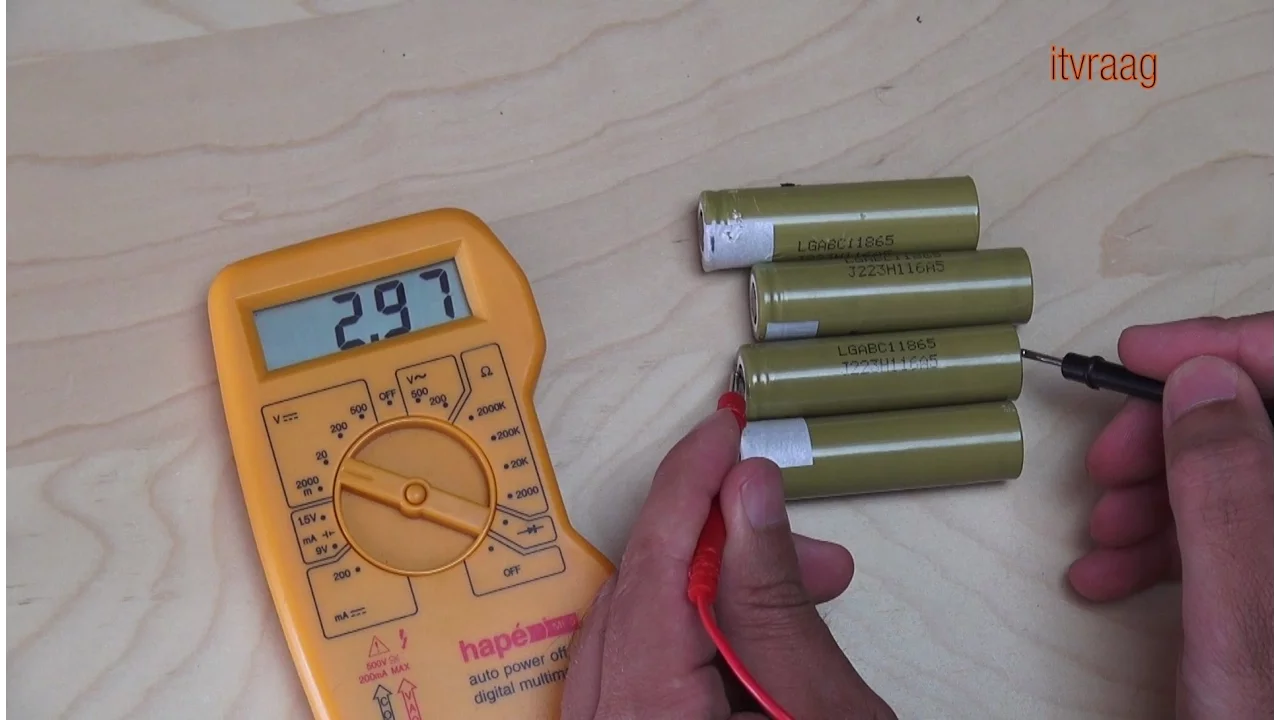18650 batteries are a popular choice for powering electronic devices due to their high energy density and long lifespan. In this blog, we’ll dive into the basics of 18650 batteries, including voltage, amps, capacity, and how to connect them in series or parallel. Plus, we’ll explore some lesser-known facts about these powerful power sources and provide tips on how to apply this knowledge for increased productivity and efficiency.
Voltage
The voltage of a battery is a measure of the electrical potential difference between the two ends of the battery. In other words, it’s the force that pushes electrons through a circuit. For 18650 batteries, the typical voltage range is 3.6 to 4.2 volts.
To calculate the total voltage of a battery pack (a group of batteries connected in series or parallel), you can use the following formula:
Total Voltage = Number of Batteries * Single Battery Voltage
For example, if you have a pack of four 18650 batteries connected in series, each with a voltage of 3.7 volts, the total voltage would be:
Total Voltage = 4 * 3.7 = 14.8 volts
Amps
The current, or amps, of a battery refers to the flow of electrons through a circuit. It’s important to consider the amps of a battery when selecting one for a particular device, as the device may require a certain amount of current to function properly.
The maximum discharge rate of an 18650 battery is typically between 10 and 30 amps. This means that the battery can safely provide a current of up to 30 amps for a short period of time.
Capacity
The capacity of a battery refers to the amount of energy it can store. For 18650 batteries, the capacity is typically measured in milliampere-hours (mAh). The higher the capacity, the longer the battery will last before needing to be recharged.
One way to increase the capacity of a battery pack is to connect the batteries in parallel, rather than in series. When batteries are connected in parallel, the capacity is increased, but the total voltage remains the same.
Connecting in Series vs. Parallel
When connecting batteries in series, the positive terminal of one battery is connected to the negative terminal of the next battery. This increases the total voltage of the battery pack, but the capacity remains the same.
[Battery 1] -- [Battery 2] -- [Battery 3] -- [Battery 4]
On the other hand, when connecting batteries in parallel, the positive terminal of each battery is connected to the positive terminal of the others, and the negative terminal of each battery is connected to the negative terminal of the others. This increases the capacity of the battery pack, but the total voltage remains the same.
[Battery 1] -- [Battery 2]
| |
-- [Battery 3]
| |
-- [Battery 4]
Fun Fact: 18650 Batteries Were Originally Developed for Laptops
Most people don’t realize that 18650 batteries were originally developed for use in laptop computers. In the early 2000s, laptop manufacturers began using these high-capacity batteries as a more efficient and longer-lasting alternative to traditional lead-acid batteries. Today, 18650 batteries are used in a wide variety of electronic devices, from electric vehicles to power banks.
5 Tips About 18650 Batteries
- Choose the right battery for your device: Selecting a battery with the appropriate voltage, amps, and capacity for your device can help ensure that it performs at its best.
- Connect batteries in series or parallel to meet your power needs: Depending on whether you need to increase the total voltage or capacity of your battery pack, you can choose to connect your batteries in series or parallel.
- Use a battery management system (BMS): A BMS helps to regulate the charging and discharging of your battery pack, ensuring that all the batteries in the pack are charged and discharged evenly. This can help extend the lifespan of your batteries.
- Store your batteries properly: Proper storage can help extend the lifespan of your 18650 batteries. It’s recommended to store them at a cool, dry location and to avoid extreme temperatures.
- Charge and discharge your batteries correctly: Overcharging or discharging your batteries too low can damage them and reduce their lifespan. Use a battery charger that is specifically designed for 18650 batteries, and avoid discharging your batteries below their recommended minimum voltage.
Challenge: Calculate the Total Voltage and Capacity of a Battery Pack
Let’s test your knowledge with a challenge! Given the following information, calculate the total voltage and capacity of a battery pack containing four 18650 batteries:
- Single battery voltage: 3.7 volts
- Single battery capacity: 2500 mAh
- Number of batteries: 4
First, let’s calculate the total voltage of the battery pack:
Total Voltage = Number of Batteries * Single Battery Voltage
= 4 * 3.7
= 14.8 volts
Next, let’s calculate the total capacity of the battery pack:
Total Capacity = Number of Batteries * Single Battery Capacity
= 4 * 2500
= 10000 mAh
Therefore, the total voltage of the battery pack is 14.8 volts and the total capacity is 10000 mAh.
Conclusion
18650 batteries are a powerful and efficient choice for powering electronic devices. By understanding the basics of voltage, amps, and capacity, and knowing how to connect batteries in series or parallel, you can make informed decisions when selecting and using these batteries.

